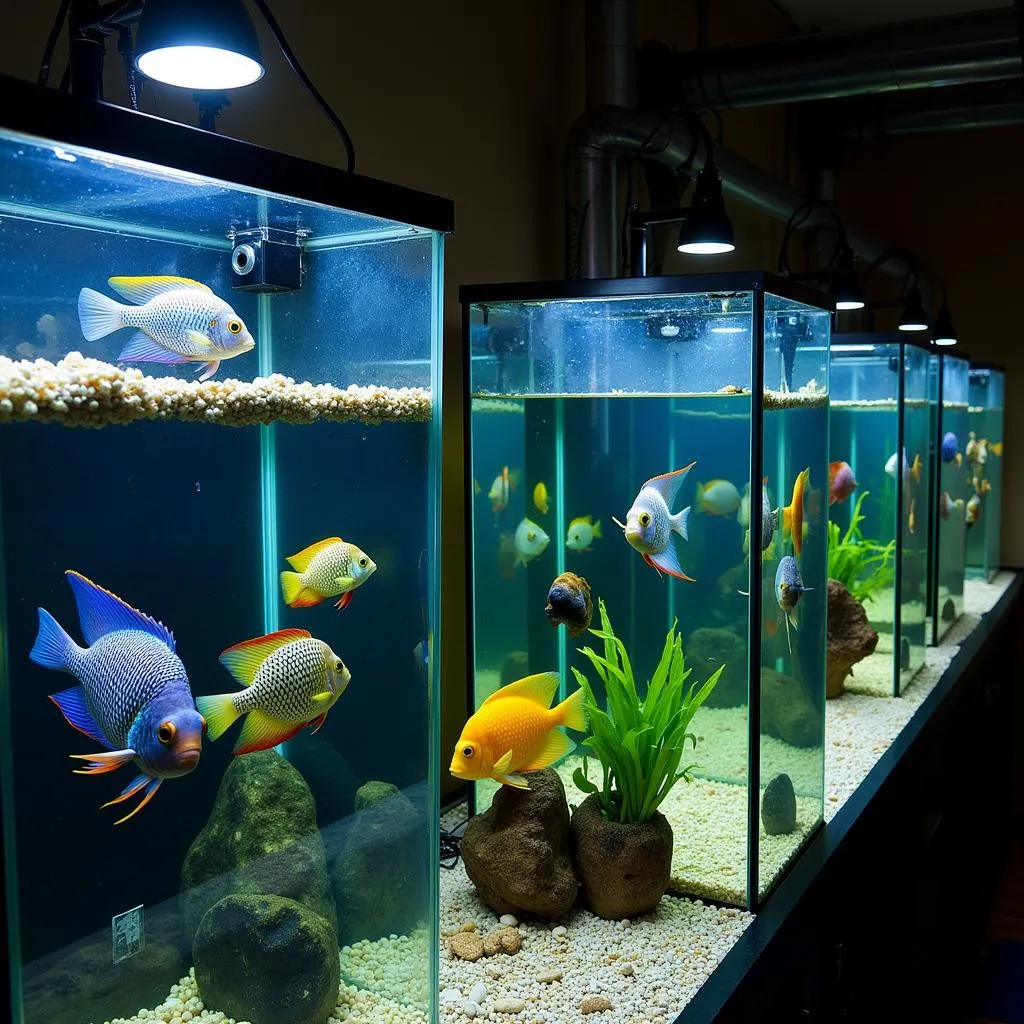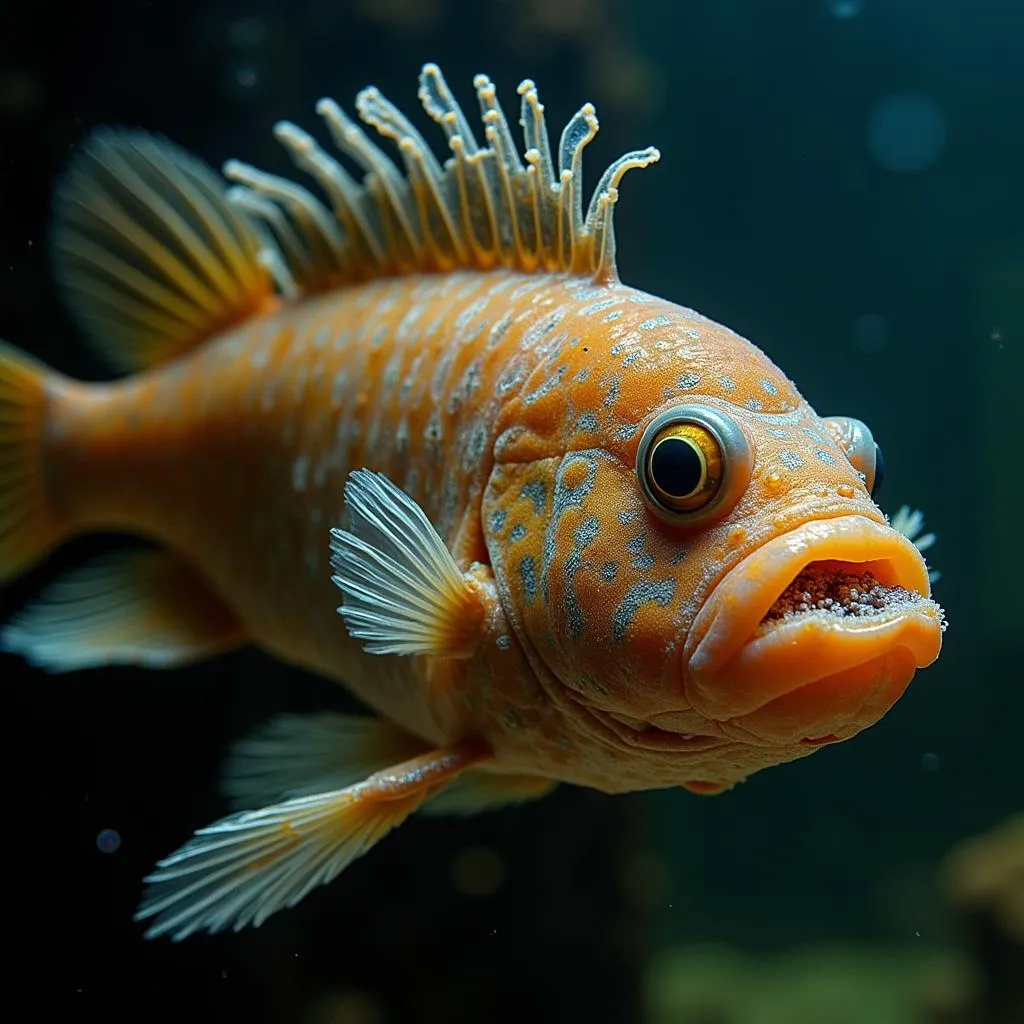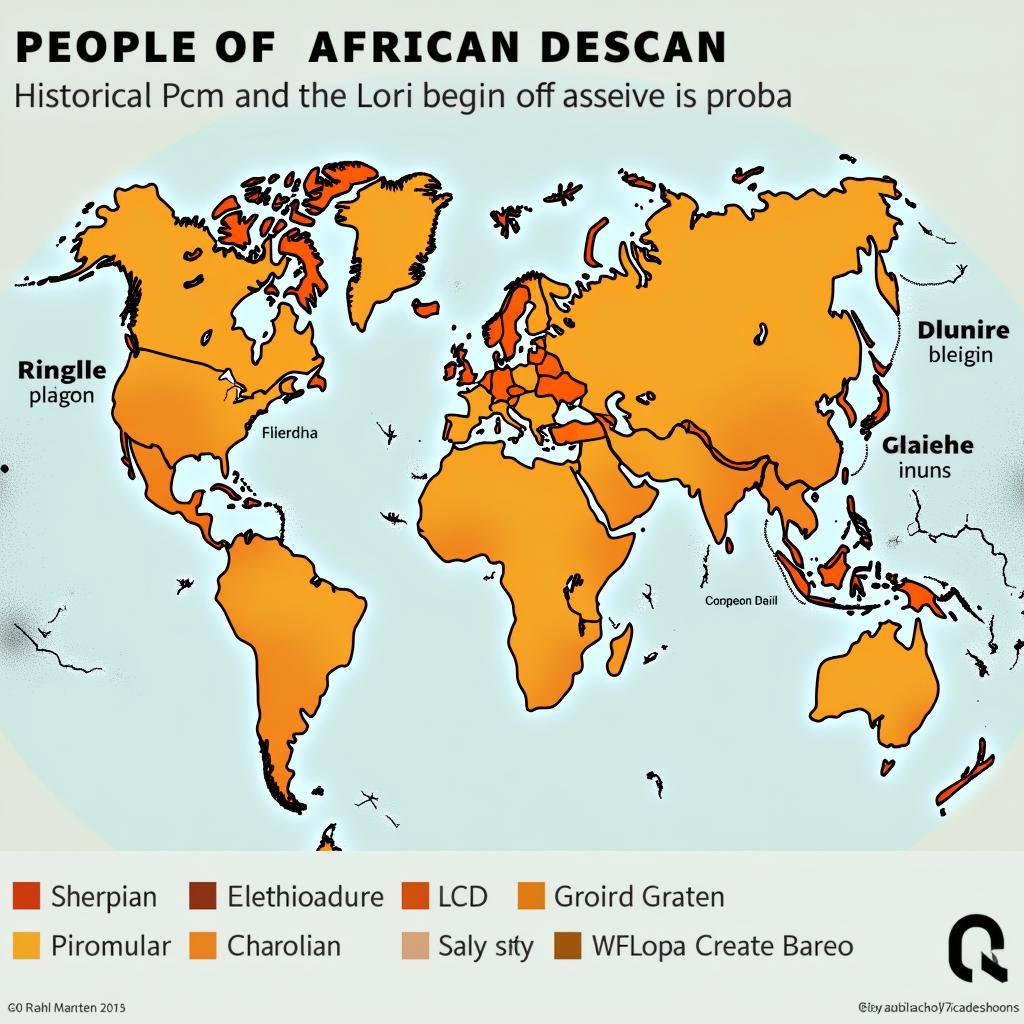Setting Up an African Cichlid Breeding Farm
African cichlids are renowned for their vibrant colors, diverse behaviors, and fascinating breeding habits. This has made them increasingly popular among aquarium enthusiasts worldwide. This surge in demand has also led to the growth of African Cichlid Breeding Farms, both as a hobby and a lucrative business venture.
 Rows of well-lit aquariums filled with colorful African cichlids in a breeding facility.
Rows of well-lit aquariums filled with colorful African cichlids in a breeding facility.
Factors to Consider Before Starting an African Cichlid Breeding Farm
Before diving into the world of cichlid breeding, careful planning and consideration are crucial for success. Here’s what you need to consider:
- Space Requirements: African cichlids, depending on the species, can grow quite large. Ensure you have ample space to accommodate multiple tanks, breeding setups, and growing fry.
- Water Chemistry: African cichlids thrive in specific water conditions. Maintaining the correct pH, hardness, and temperature is vital for their health and breeding success.
- Filtration Systems: Efficient filtration is non-negotiable. Cichlids are messy eaters and produce a significant bioload. A robust filtration system is essential to maintain optimal water quality.
- Species Selection: Research and select cichlid species that are compatible in terms of water parameters, temperament, and breeding habits.
- Market Demand: Study the local market demand for specific cichlid species. This will help you focus on breeding fish that are sought after and ensure a steady stream of customers.
Setting Up Your Breeding Tanks
The success of your breeding operation depends heavily on the environment you create for your cichlids.
- Tank Size and Setup: Choose tank sizes appropriate for the species you’re breeding. Larger tanks offer more stable water parameters. Provide hiding places like rocks, caves, and plants to mimic their natural habitat and reduce stress.
- Water Parameters: Maintain a pH between 7.8 and 8.5 and a temperature between 78-82°F (25-28°C) for most African cichlids. Regular water changes and testing are crucial.
- Filtration and Aeration: Invest in powerful filters that provide both mechanical and biological filtration. Adequate aeration is also essential to ensure sufficient oxygen levels in the water.
- Lighting: Cichlids are diurnal, meaning they are active during the day. Provide a consistent light cycle of 10-12 hours using full-spectrum aquarium lights to simulate natural sunlight.
Breeding and Caring for African Cichlids
Understanding cichlid breeding behavior and providing optimal conditions are key to successful breeding.
- Sexing Cichlids: Identifying males and females can be challenging. Look for differences in coloration, fin shape, and the presence of egg spots in females.
- Conditioning for Breeding: Feed your cichlids a high-protein diet rich in live or frozen foods like brine shrimp and bloodworms. This helps prepare them for breeding.
- Breeding Behavior: Observe for signs of breeding behavior, such as digging, fin flaring, and lip-locking. Once spawning occurs, the female will typically hold the fertilized eggs in her mouth.
- Fry Care: After a few weeks, the female will release the free-swimming fry. Provide them with specialized fry food like baby brine shrimp or crushed flakes to ensure proper growth and development.
 Close-up shot of a female African cichlid with a mouthful of eggs, showcasing its maternal instincts.
Close-up shot of a female African cichlid with a mouthful of eggs, showcasing its maternal instincts.
Common Challenges and Solutions in African Cichlid Breeding
Even with the best preparation, challenges can arise. Being aware of these and knowing how to address them is important.
- Aggression: Cichlids can be territorial, especially during breeding. Ensure ample space, hiding spots, and consider separating overly aggressive individuals.
- Diseases: Maintain excellent water quality and quarantine new arrivals to prevent the spread of diseases. Promptly treat any signs of illness.
- Nutritional Deficiencies: A balanced diet is essential for health and vibrant coloration. Vary their diet with high-quality commercial food, live foods, and vegetables.
Turning Your Passion into Profit
If you’re considering african cichlid breeding as a business, here are some tips:
- Market Research: Identify popular and in-demand species in your area. Network with local fish stores and hobbyists.
- Marketing and Sales: Create an online presence through social media or a website to showcase your fish and reach a wider audience. Consider attending local fish auctions or events.
- Sustainable Practices: Breeding responsibly and ethically ensures the long-term health of your fish and the hobby.
Conclusion
Breeding African cichlids can be a rewarding experience, whether as a hobby or a business. With meticulous planning, dedication, and a passion for these captivating creatures, you can create a thriving underwater world and contribute to the appreciation of these fascinating fish.


